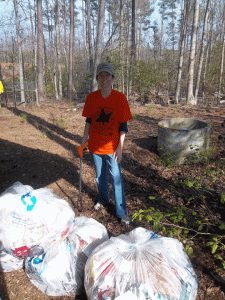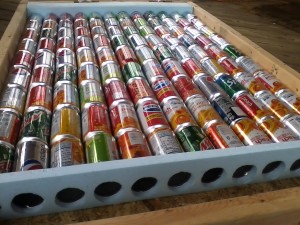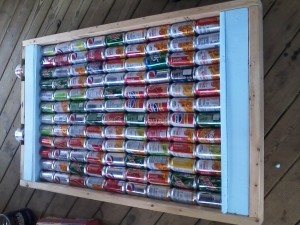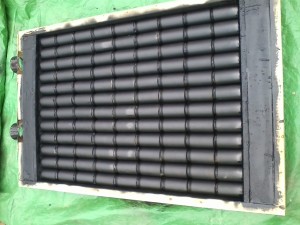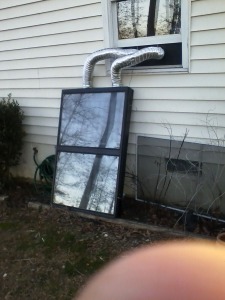Lately when I had been driving to and from work, it was getting harder and harder not to notice the huge amount of litter covering the roadsides, most of it recyclable. So I read online that our county offered free litter pickup supplies at the Planning and Zoning department.
When I dropped by, they were very helpful and offered all kinds of free supplies to get the work done: large plastic bags, ‘gopher’ gripper sticks (I have no idea what they’re actually called), durable work gloves, orange safety vests (we already had orange shirts), and even reusable ‘go green’ tote bags (to use at the grocery store). Everything was free, all they asked in return was that we let them know how many bags we filled up. This is so they can report these figures and get more supplies. They get these supplies from grant money from the county government.
Check with your own county government, and I guarantee they will have free supplies for you as well.
So today my husband Carl and I went out to do our first litter pick-up on one of our heavily-littered county roads. Neither of us was sure what to expect, because we had never done anything like this before. Even though it was a lot of work, it actually turned out pretty good.
We found a good spot to pull off, and just started going down one side of the road. We filled two extra-large bags after going a quarter-mile on one side of the road, and then crossed over and started down the other side. In all, we filled 4 extra-large bags and went on both sides of a quarter-mile stretch of road.
It was mind-boggling to think of the amount of litter out there, since we had collected so much in such a short distance. But we are not daunted, and plan to carry on doing our part in cleaning up litter. Hopefully at some point, we can organize more people to help out.
I plan to weed through the litter and pick out the recyclables to take to our local recycling center. Next time, I think it would be better to separate the recyclables as we’re picking up litter, that would save a lot of time.
Update 4/13/2013 : I have gone through about half of the litter, and so far have filled up two giant bags of recycling. It seems that most roadside litter is eligible for recycling. I’m planning another litter pick-up operation soon…

